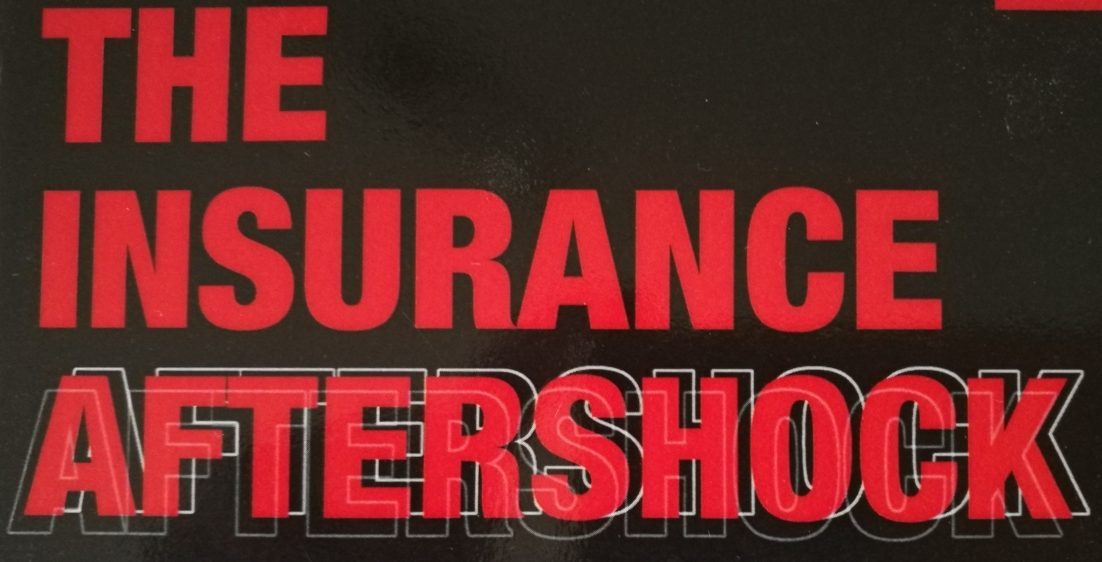Insurance corporates are now proposing major changes to the way the private insurance industry structures its premiums- here comes ‘fixed sum insurance’ commonly referred to as ‘sum insured’. This is the cost to rebuild a home to the same size with similar materials at today’s rates. Their argument is that with a Sum Insured policy the customer has control of establishing the value of the home and ensuring that value is kept up-to-date. In the event the homeowners make any improvements or extensions it will be critical to keep your insurer informed.
The insurance industry contends that this method will provide swift and certain resolution to claims and that moving from square metreage to a Sum Insured methodology will allow homeowners to know upfront the ‘most their insurer will spend to rebuild their home in the event it does need to be rebuilt’.
Any additional specifics of the home will also have to be taken into account- such as the cost of demolition, architects fees, retaining walls, planning and council consents etc. In this way the industry asserts that it will know much more about a home than just its size and location. The argument is that often two homes of different sizes can cost vastly different amounts. The rationale for the change is that reinsurers are looking for more certainty about the actual amounts they are insuring. So if you have a retaining wall, landscaping, or a high end Italian kitchen, then you will have to inform the insurer. This will mean that the householder will not be able to rely on its Quotable Value calculation nor on the market valuation of their property but on the actual costs of replacing their home. The square meterage and quality of the building becomes critical. The onus will fall squarely on the property owner to ensure that they have adequately assessed the value of their property and update that value regularly.
The value of a rebuild can be carried out using an online building calculator which will produce a standard calculation based on average property values – for those with anything other than a bog standard property this methodology is no doubt inadvisable. Already the calculators have been found to produce very inadequate results in many circumstances. The details provide the insurer with a general estimate of the rebuild cost. A ‘general estimate’ leaves open the possibility for disagreement. A more certain method is for customers to provide their own valuation from an independent quantity surveyor, valuer or builder, but policyholders will have to bear these additional costs. A valuation can cost around $1500.00, and if the homeowner is having to have these done once a year, it is not an inconsiderable sum. How often do these valuations have to be calculated- every six months, every year?
This method may be well and good in normal circumstances. But it does not work for catastrophe situations. For example ” Most home building policies in Australia are ‘sum insured’ policies which require the insured to nominate a specified figure on the amount paid out in the event of total loss. However estimating the rebuilding costs can be a complex and difficult task. The impact of demand surges cannot be adequately reflected in policies with a fixed sum insured“. Nor does fix sum insured take into account the massive costs associated with complex foundation repairs post earthquakes. (from “The Scourge of Demand Surge”, by David Chan http://www.theinstitute.com.au/journals/Journal_FebMar_2008_34-40.pdf )
So in Australia they are recommending a potential solution as offering either Total Replacement Policies or Extended Replacement Policies as these “significantly address the problem of under-insurance by providing for full replacement cost of the home“. So why would the New Zealand insurance industry be suggesting fixed sum insurance. I suggest it is for one simple reason – their interest in paying only the portion of the loss for which a premium has been calculated and charged. It is unlikely that most people’s sum fixed insurance will adequately cover the costs associated with a major catastrophic loss. Had the Canterbury situation taken place on the basis of a fixed sum insurance methodology then tens of thousands of homeowners would be potentially 100,000s of dollars out of pocket because of the demand surge consequences as a result of delayed claim settlement and expensive foundation repairs. (See https://thechristchurchfiasco.wordpress.com/2013/03/07/demand-surge-and-the-implications-for-policyholders/).
If a fixed sum policy is to be introduced then it is absolutely critical that there is a legislated requirement that an insurer settle a policyholder’s claim within a very limited and fixed time frame otherwise the fixed sum will in no way accurately reflect the true value of the replacement of a property. Here in Christchurch some claims will not be settled for 6 or 7 years or more post earthquake. Under a fixed insurance policy where demand surge can cause the costs of rebuild to escalate by up to 70% over their original value, policyholders would be left massively out of pocket. Great for insurers and devastating for policyholders. Is this simply more evidence of insurance industry self – service?
The major insurers have already moved to this system. Tower Insurance has said it is still considering the best option for its customers. As one commenter in The Christchurch Press recently stated,
” This is simply moving risk from the insurance companies to the home owners and trying to put definable caps on what their exposure to an event is likely to be, it has nothing to do about being “fairer” or “better” for the consumer. I already pay premiums for a service that the insurer does not seem to be obligated to provide in a timely manner and now they are saying that this change will make it better for me for future events. NONE of the delays I am experiencing in getting repairs done will have in any way have been reduced if we had already been insured under an agreed value model.”
Resources
http://www.voxy.co.nz/business/home-insurance-changes-will-mean-swift-resolution-aa/5/142627
http://www.stuff.co.nz/the-press/business/8055968/Seismic-changes-in-house-insurance-to-sum-insured
http://www.stuff.co.nz/business/money/8044573/AA-moves-insurance-risk-to-homeowners
~Future Proofing for a sustainable, participatory, democratic society.
https://thechristchurchfiasco.wordpress.com/about/
https://twitter.com/fiascofiles
http://www.facebook.com/thechristchurchfiasco
If you would like to contribute a post on this topic then see Guest Archives.

August 1, 2013 at 10:03 pm
I think we need a new player in the market of the non-profit organisation kind. I may be naive, but I feel the whole insurance industry is a lose-lose all the way for homeowners and there is no current alternative available.
LikeLike
May 29, 2013 at 5:45 pm
Thank you so much for these insights. I have houses in Auckland and am shocked at the what’s your number mentality from brokers . Not a single mention of demand surge, settlement time frames, foundations, demolition or building in a different location.
” If you can kindly arrange for a valuation to be completed and provide to me it would be much appreciated.”
That was it. No detail explanation of a complete change in the Insurance Industry. Just give me a number.
Thank you for you positive spirit and trying to do something.
LikeLike
Pingback: Introducing KiwiSure | thechristchurchfiasco
March 10, 2013 at 10:33 am
As a resident of a house to be rebuilt in a heavily liquefied area, this new approach to insurance scares me, and should everyone else, as I know the new foundations required on my property will be very expensive. Had I been insured on a ‘sum insured’ policy, those foundations would not have been part of my original valuation and so I would not be able to rebuild my house without incurring their cost myself. This sum insured idea does not take into account unexpected costs, it’s just another way for the insurance companies to increase their premiums while lowering their risk.
LikeLike
March 10, 2013 at 7:01 am
Always changing the rules so that they favour Insurance companies only
LikeLike